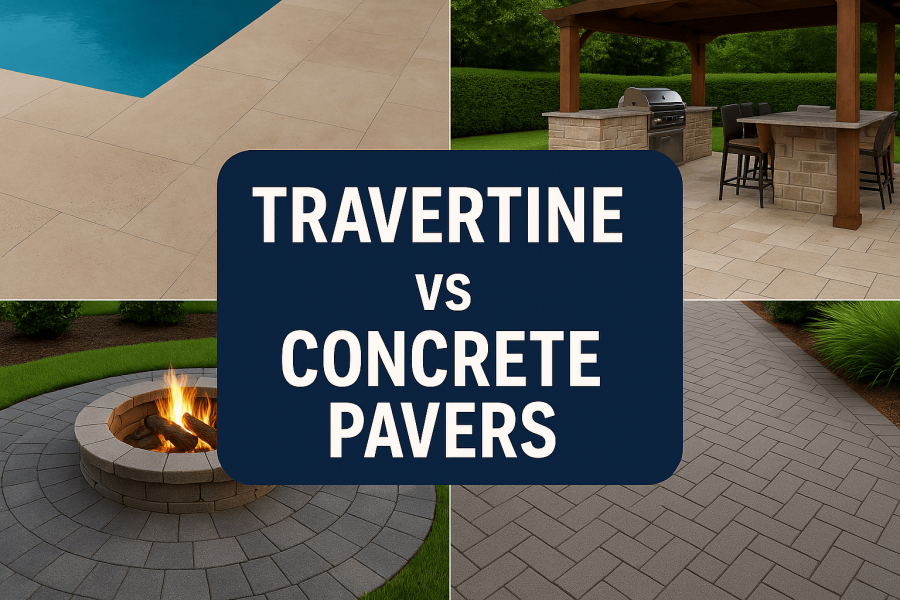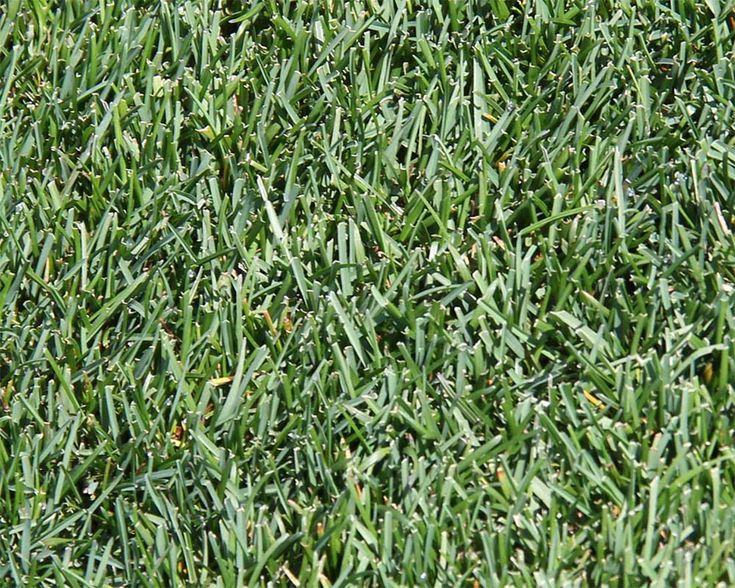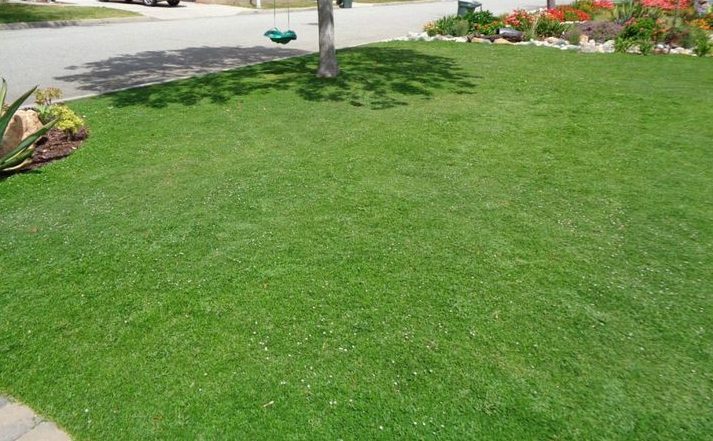- >
Centipede Sod
- By: Jane Smith
- Date: Dec 11 2020
Similar Articles
Artificial Turf vs Sod for Lawns, Backyards & DIY Makeovers
Thinking about artificial turf or sod? Discover the pros and cons of each—from cost and maintenance to durability and pet-friendliness—so you can choose the best option for your lawn or backyard project.
Travertine vs Concrete Pavers for Florida Pool Decks, Patios, Fire Pits & More | bhild
Compare travertine and concrete pavers for Florida pool decks, patios, and driveways — from heat retention and slip resistance to cost, maintenance, and curb appeal.
Beat the Heat: Florida Summer Landscape Survival Guide
Beat the Florida heat with smart summer landscaping. From drought‑tolerant plants to shaded retreats, this guide covers designs, materials, and maintenance tips to keep your yard thriving all season long.
On this page
- Deciding If centipede or other sod is the right sod for my yard
- Centipede grass origin
- All about centipede grass
- What is the colour of centipede grass?
- FAQS about centipede grass
- How does it feel?
- How centipede grass reacts during the season?
- Injury recovery?
- Pros & cons of centipede
- Wear & tear
- How it reacts in heat, cold, shade, drought, salt,
- How to care for it?
- Ph levels of centipede
- Centipede types of fertilization
- Cost compared to other sods grass
Deciding if centipede or other sod is the right sod for my yard
There are many types of subspecies grass to consider when you are deciding if centipede or other sod is the right sod for my yard. Before growing a new lawn, we must consider the climate of the location in which you are planning to grow. Warm-season grasses mostly do best in warm weather regions, like southern states. Centipede sod is all known as warm-season grass. There are some subspecies warm-season grasses like Bermuda Grass, St. Augustine Grass, Centipede grass, Zoysia Grass, Carpetgrass. Determining your types of grass is very important. If your home has a beautiful, small or large lawn and are you looking to maintain it through lawn aeration, you first need to determine what type of grass you have.
If you have a healthy lawn, then you can have grass that’s suitable for your climate and also considers the amount of sun that your lawn will be able to get. Centipede grass sod is mostly familiar by choice of grass for homeowners who, really looking for a low maintenance yard. The centipede grass sod is drought-tolerant, low growing, and suppresses weeds. Centipede grass spreads on runners so, it becomes easy to control than more aggressive grasses. Grass prefers deeper, less-frequent watering. Centipede Grass has moderate shade tolerance. This grass is also familiar by “lazy man’s grass” because centipede grass is a warm-season grass. Having centipede sod or any other sod will surely look awesome in your yard. In yard there are many choices centipede or other sod.
Centipede sod origin?
Centipede grass originated in china & was introduced in the United States in 1961 centipede grass especially known as warm-season grass during the warm weather the productive rates go higher from the late spring to the summer season.
All about centipede sod
Centipede grass really grows well in flat areas it has to have plenty of sunlight needs 6 – 7 hours per day for good results. Centipede grass is known for its excellent heat tolerance & extremely low maintenance requirements. Eremochloa ophiuroids were also known, as centipede grass. This grass is well-known grass and it’s known as the choice of grass for homeowners who really looking for a low maintenance yard. As this centipede grass is also known as “lazy man’s grass” centipede grass is a warm-season grass that spreads through the formation of above-ground runners, You might see the colours difference during summer and winter inactive summer it looks like green and winter it looks light brown but actually, it’s natural light in colour.
Centipede grass can grow in areas that receive 6 – 7 hours of sunlight each day. Centipede grass grows slowly in shaded areas. Where other grasses take full sunlight to do well. Centipede grass prefers less frequent watering. If your lawn is not getting good rainfall then, water your lawn thoroughly three times a week. Watering centipede grass at any time of the day is better than not watering. The best time to water centipede grass lawn is before 10:00 AM and all watering should be completed before this time. There are several good reasons for this. During spreading the centipede grass.
The first year is usually dull and you will notice extremely mild shards forming out of patches. As you continue, the second year will portray more growth in this case we need to be patient. Once the third year started you will be rewarded for your all efforts, you will see grass growing healthily and quickly throughout your lawn.
What is the colour of centipede sod?
Centipede grass colour is a natural light green colour with a coarse texture when its active summer its looks green & when its active winter colour changes into light brown colour but if we fertilize with nitrogen then centipede grass will become dark green.
FAQS about centipede grass
What is the colour of centipede sod?
Centipede grass colour is natural light green colour but when you fertilize with nitrogen then it becomes dark green. However, when centipede grass breaks dormancy, the turf often becomes chlorotic due to an iron deficiency, when undergoing environmental stress or when leaves are bruised from traffic. Centipede grass leaf blades often we see it turns into red or purple colour.
The best fertilizer for centipede sod?
Nitrogen requires most for centipede grass to see a better result. A fertilizer with high amounts of nitrogen and potassium and little or no phosphorous is also known best for centipede grass. It does not require frequent fertilization, and it will tolerate the medium amount of shade.
How fast centipede grass spread?
Centipede grass grows slowly for the first year and second year but if you remain calm and patient and if you make sure that soil maintains the proper PH for centipede grass and after taking care of this then in third year grass grows automatically. Seeding must be done during the warm season month of April to July this month’s are best for growing centipede grass. It does not require frequent fertilization, and it will tolerate medium amount of shade
What is the best time to water centipede grass?
Preferably before afternoon, You can water the lawn in the morning this also allows the grass to dry before nightfall. Centipede grass needs a weekly 1 to 1.25 inches of water to retain its colour in summer. If you want the best result the water your lawn thoroughly 20 – 30 minutes three times a week, if we do not get significant rainfall. Watering centipede grass at any time is better than not watering at all.
Mowing centipede grass
The ideal mowing height for centipede grass is from 1 to 2 inches it also depends on the grass growth, depending on the specific grass site and management regime and is the best determined by the conditions in the lawn. Lawns which are in partial shade are better mowed at 2 inches or more. Start the season by mowing the lawn at a height of 2 to 2.5 inches based on a benchmark set. This is the main measured distance from the mower blade to a hard surface and can easily be determined by using a small ruler. Over the next several mowing, gradually reduce the mowing. Once the height is reached where the grass does not look good anymore or, it looks too thin or scalped then raise the mowing height back to the previous setting.
How does it feel?
Having centipede grass in your lawn feels amazing in look also and by nature also, Its low maintenance grass that everyone should have it in there lawn. Centipede grass is known for its excellence heat tolerance & extremely low maintenance requirements so that everyone can keep. Centipede grass grows incredibly well in poor and sandy soils and can survive in areas that have pH as low as 4.5, which is much lower than other grasses.
How centipede grass reacts during the season?
Centipede grass is a warm-season grass, the reason behind calling warm-season grass is because productive growth season comes during warm weather, from the late spring through the late summer month. Don’t overwater your lawn. You should only, water it during the periods of drought in which your lawn starts to show signs of stress. Centipede grass requires far less attention.
Injury and recovery
Centipede grass mostly damaged by cold or over water, an injury may cause dead patches in your lawn fertilizing excessive amount of nitrogen, fertilizing too early or too late with nitrogen, mowing lower or higher than recommended. Repairing damaged areas is simply first, rake off the dead grass. Then either sow centipede grass seed or fill in dead areas with plugs or sods. That’s how it recovers there are a couple of ways to recover like, Including sowing seed in the damaged lawn areas.
Pros and cons of centipede sod
Pros;
- Centipede grass is known for its excellence heat tolerance & extremely low maintenance.
- The centipede grass requires far less attention.
- This grass has high cold tolerance.
- Centipede grass is an aggressively growing grass that requires little care.
- Centipedegrass is a good choice for a thick, healthy and low maintenance lawn.
- Centipede grass tolerates moderate amount of shade, in some cases, it’s known as “lazy man’s grass” because of its low maintenance requirement.
Cons;
- Centipede grass has a shallow root system, which means it does not tolerate foot traffic so it means you must be careful by your foot.
- Centipede grass can’t survive in cold.
- During cold grass colours changes from green to brown as its hard freezing, it becomes brown and after light freezing it becomes green colour as the temperature rises.
- Centipede grass does not hold up under medium or heavy traffic.
- Overwater and fertilizing can harm the grass.
Wear & tear
Centipede grass has one of the lowest traffic tolerances of all grasses, centipede grass mustn’t be planted in an area with a lot of heavy use. It makes a very full, thick, and attractive lawn, which is mostly great for both homeowner and businesses. Avoid planting centipede grass in foot traffic, or where people play sports, as this will quickly tear up the grass. Because of the slow growth of grass, any of the damage will take a while to rectify, which could be frustrating.
How it reacts in heat, cold, shade, drought, salt
Heat
Since Centipede grass is low maintenance, but it requires regular lawn care. Centipede grass will grow really well when you have it in full sun, it is extremely tolerant of shade3 and can handle partial shade without a lot of problems, in full sun heat it will grow better & faster. It is a good idea to plant it in as much as sun heat possible, it will be able to grow faster, thicker, and stronger in more solar heat.
Cold
Centipede grass is a warm-season grass, it will grow much better in southern side areas of the United States. However, there are few types of centipede grass that is also designed and withstand cooler temperatures without as much damage.
Shade
Centipede grass will grow really well if you have it in full sun, it is extremely tolerant of shade and can handle partial shade without a lot of frustration. Centipede grass tends to grow so slowly anyway, it will be good idea to plant it in as much sun as possible,
Drought
Centipede grass looks shinier and will grow much better when we water regularly, it can withstand periods of drought without being killed. This is not a problem in the south where these types of grass grow well. Homeowners can take benefit from this when they haven’t got the rain in a while. However, for the best growth of the centipede grass, it’s a good idea to water grasses regularly to prevent drought damage, which can have longer recovery due to the slow growth of this grass.
How to care for it
Centipede grass makes a very beautiful lawn, but it also requires some specific upkeep and maintenance. Proper maintenance is very important to make sure that your centipede grass not only looks great but also it is healthy as well. This type of grass is very easy to care for, although there are a few things that you need to take into consideration because of how tender and easily grass can be damaged. While this grass grows in partial shade, if you notice that your lawn isn’t drying out after a rain, then you may want to consider removing some overhanging limbs. These can also cause the grass to stay damp after rain and will prevent proper growth. Very poorly draining soil may need to be op dressed in the sand or a drainage system may require.
Centipede grass is shallow-rooted and will need to be watered if there is some drought conditions are forecasted. However, other grasses will tell you when it needs to be watered. The colour of grass will automatically be changed slightly this is the sign where grass needs to be watered. Deep watering promotes deeper root growth. Don’t set your sprinkler system to come on everyday base but rather water when it needs it. Those who water every day whether the grass needs it or not will only come out thatch or disease problem.
Ph level of centipede grass
Soil pH is represented by a rating of 0 to 10. The lower the number, the higher the acidity. The neutral point is 7.0, and any number above this is more alkaline. Some turfgrasses like a bit more acidity. Such as centipede grass, but most are fine around 6.5. in high pH soils, often need to lower yard pH. This is relatively very easy but should start first with a simple soil test to determine how much acidity needs to be added.
Lowering the pH of grass can acidify the soil, so if your test revealed alkaline soil, that’s the direction to go, this can lower the number and make it more acidic. A lower lawn pH can be achieved with sulfur or fertilizer made for acid-loving plants. Sulfur is best used before planting or installing a lawn and takes several months to break down for plant uptake. Therefore, apply it well in advance of installing the grass for better results. You can also achieve the same effect by working in sphagnum moss or compost. Acidic fertilizers are easy to use and probably the simplest way to lower pH in existing lawn situations.
The overall recommendation is around 5 pounds per 1,000 square feet (2.27 kg. per 304.8 sq.m.). It will be best to avoid applying the product during the hottest part of the day and water. In just a short while, your grass will be happier and healthier.
Centipede grass fertilization
The ideal time for applying fertilizer, or weed & the feed products, to grass is a weeks after the green-up, but before temperatures start topping up 85F. That’s usually around mid of May, but let your lawn be your best guide. If the ratio of nitrogen in the fertilizer is too high, or too much fertilizer is used, the grass will grow too quickly and will be susceptible to disease. Here are some good numbers to remember use a phosphorus-free fertilizer such as 15-0-15 with 2 pounds of nitrogen for 1000 square feet.
The centipede grass will get damaged if it is put on too early in the growing season. If you can’t apply it at the right moment, it is better to skip using this product altogether. Ensure that any product you use is manufactured properly for the needs of centipede grass. Centipede grass will never respond well to high doses of fertilizer.
Cost compared to other sods grass
Centipede cost for sods
| Grade | Minimum cost | Maximum cost | Cost per pallet |
|---|---|---|---|
| Primary | $0.35/sf | $0.45/sf | $169 |
| Standard | $0.42/sf | $0.50/sf | $270 |
| Premium | $0.45/sf | $0.59/sf | $430 |







